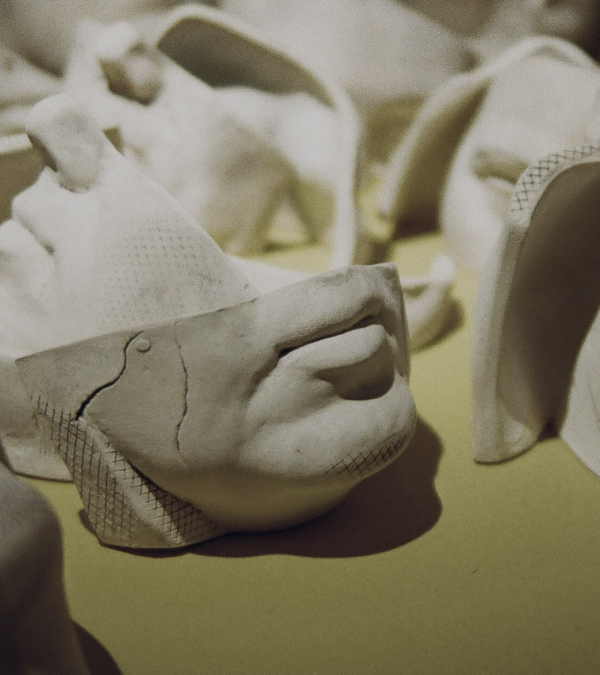
The Four Faces of a CXO in Sports Leadership
As business leaders step into a new CXO role for the first time, it is often a steep learning curve that can be challenging to navigate. The transition requires leaders to adjust their approach to time management, talent development, and relationship building in order to adapt to a new set of expectations and ways of working (to avoid rising to a level of incompetence - the Peter Principle). This can be a daunting task, as leaders must quickly establish their credibility while also building strong connections with their team, stakeholders, and fans.
Every day at Sportsology Group we sit with CXOs of the top five US major sporting leagues to establish “what” they need to do and “who” they need to be, to be successful in the role. In some cases, the lessons are learned too late, but in many scenarios, we have managed to work with leaders early in the process to help set them up for success in the first 120 days on the job and ultimately, put them on the path to reach their vision.
The key is, what made you successful in your previous role (i.e. strong operator), won’t guarantee success as CXO.
What changes in the role?
When a CXO assumes a new leadership position, whether they have prior experience in the role or not, they are faced with significant changes in the way they manage their time, attract and retain talent, and cultivate essential relationships to achieve their organization's goals. These changes require CXOs to carefully evaluate their approach to time management, talent development, and relationship building allowing them to make strategic decisions to drive successful outcomes for their organization. In this article, we will provide an overview of the fundamental roles that CXOs should play to maximize success in their new role.
Introducing the CXO’s Four Faces

When we talk about the “Faces” of a CXO, we are ultimately referring to the person you need to be in your role. At any given moment of any given day, a CXO is expected to flex one of these four faces to help drive outcomes for the organization. We have identified four key faces that should be exhibited in the role, which include being:
Face 1: A Change Agent – Being a catalyst for new, better, more.
Sports organizations are constantly faced with new challenges (i.e. new leaders, vision re-setting, shifts in consumer and fan engagement, increasing employee expectations, etc.) requiring organizations to drive change within the business or run the risk of inter and cross-department friction.
The role of CXOs as "Change Agents" becomes critical in being a catalyst for change, constantly seeking methods and approaches to realign the organization towards its mission and objectives through a lens of structure, process, and culture. In this context, it is essential for CXOs to; 1) identify what is changing, and 2) respond to the need for change (i.e. set plans, communicate, implement, and maintain).
Change, however, should not just be driven by external factors (e.g., league rule changes, recessions, shifting fan demographic), CXOs must constantly be seeking change internally to improve the operations of their business. New technology, upskilled talent, and efficient 3rd party solutions require constant re-organization and a shift to improving the way organizations and departments operate. If your organization is not re-structuring or evaluating the way they do business every 2 – 3 years, then you run the risk of being left behind. The capability debt then becomes challenging and expensive to replenish (forcing organizations into buy vs build solutions).
CXOs must be a catalyst to promote and drive change within the organization, finding other change agents in the organization to help you with the mission. If you expect stability, maybe sport is not for you. As a CXO, take the time to focus and learn how to lead through it.
What change do I seek to make? Do I have the right plan to drive change? How do I create a culture where we are open to change? How do I implement this through my structure, people, and process?
Face 2: A Strategist – Setting thedirection and accountability framework
As the head of an organization or department, a CXO plays a key role as a visionary and strategic planner. The CXO is responsible for setting the company or department's strategic direction, identifying opportunities for growth, and developing plans to act in the short term to achieve long-term success. For a new CXO into the role, historically, this is not a skill set that many have on day one on the job, having focused more on delivering the operational objectives rather than setting them.
This role of a CXO firstly requires a comprehensive and complete view of the current state. Too often, CXOs can enter a new role and begin planning without knowing how the organization or department operates today. But these plans run the risk of being obsolete if, as a leader, you are not clear on what the organization is best in class at, where the gaps are and what opportunities exist to capitalize on. This current state assessment is often completed by new leaders in the first 30 – 90 days in the role. After this point, the role of a CXO is to set the vision and strategy and communicate this to the broader organization.
The challenge for CXOs is not in defining a comprehensive strategy, but in being accountable to it - using the strategy as a guide for all decisions, actions, and behaviors. Once a season starts; the pressure of games, the media, and player events can quickly result in losing focus of the 6 – 12 month strategy, resulting in urgent tasks taking priority over the important milestones.
Spend time developing and communicating the vision and strategy to keep teams focused and accountable to what really matters. Growth and success subsequently follow.
Do we have the right strategic plans in place? Have I clearly communicated the vision and strategy? How do I keep myself and others accountable to the strategy?
Face 3: An Integrator – Building a culture that empowers individuals, teams, and communities.
At the end of the day sports organizations, like most, are people businesses. They rely heavily on the performance and communication of others in order to succeed, individually in the role and collectively as an organization.
The role of a CXO is to seek solutions and methods to not only identify the right talent and cultural fit for the business but how they will add value to others and the broader organization. To do this, CXOs must learn to build and create an environment that empowers people to act, make decisions in the best interest of the business, collaborate on ideas and communicate openly. This is not something that can be created overnight, but should be a gradual focus on; breaking down barriers and silos between departments through transparent decision-making, encouraging thoughtful disagreement, teaching employees to communicate goals and plans, and listening.
The balance a CXO must find is the understanding needs and wants of teams at a collective level (i.e. what are they achieving? Does the team get along?), and having the EQ and empathy to engage and understand people at an individual level (i.e. what motivates that person? When are they at their best?). Without flexing and seeking the balance between these forces CXOs may struggle to integrate people into teams, and teams with people.
The amount of time and focus on building strong teams will vary depending on the state of your organization, but as organizations change – so will the staff. Spending time building great teams is time worthwhile.
Do I have the right people in the right roles? What is the culture I am building or maintaining? What do you need to insist upon on day one vs build vs eliminate?
Face 4: An Operator – Leading teams to execute.
The responsibility of achieving organizational or departmental goals and objectives ultimately falls on CXOs. It is crucial for CXOs to understand the work required to meet these objectives, even though they are not necessarily the ones executing the tasks. This shift in responsibility can be challenging for new CXOs, who are accustomed to being recognized for executing tasks and taking responsibility for their completion.
Success as a CXO to operate effectively relies heavily on the ability to establish a structure, buy or build capabilities, and improve the speed and accuracy of processes. Additionally, CXOs must be capable of identifying and managing risks as well as making decisions that best support their teams in achieving organizational or departmental goals and objectives.
Whilst having an operational mindset helps in coaching and leading organization or department tasks, CXOs must not be caught in this headspace for too long – leaving time and mental capacity to deliver on the other roles (strategist, integrator, and driver of change).
At the end of the day though, CXOs are judged by the ability to realize value and results. Without execution - promoting change, setting a strategy, and integrating teams - is impractical.
How effectively are my teams operating? What are the best practices and processes I can introduce? How do I keep people accountable?
The role we play at Sportsology Group
As part of our advisory business, Sportsology Group works closely with CXOs at the highest level across all major US leagues and teams to address the challenges faced when stepping into a leadership role. In collaboration with our Search business, our leading Advisory team offers “wrap-around” support during the first 120 days to ensure that the CXO is set up for success, and not left up to chance.
As part of our role in the 120-day support, we help CXOs with their allocation of time which proves to be one of the greatest challenges for new leaders. To be successful at the top, new CXOs will need to recalibrate how they allocate time and learn their ‘four faces’: a driver of change, a strategist, an integrator, and a collaborator. Each face is equally as important, but not necessarily required to be equal in terms of time. As new leaders shift out of pure ‘Operator’ roles, we would expect to see more time being spent driving change, integrating teams, and becoming a strategist to ensure organizations and departments are being led effectively toward their goals.











